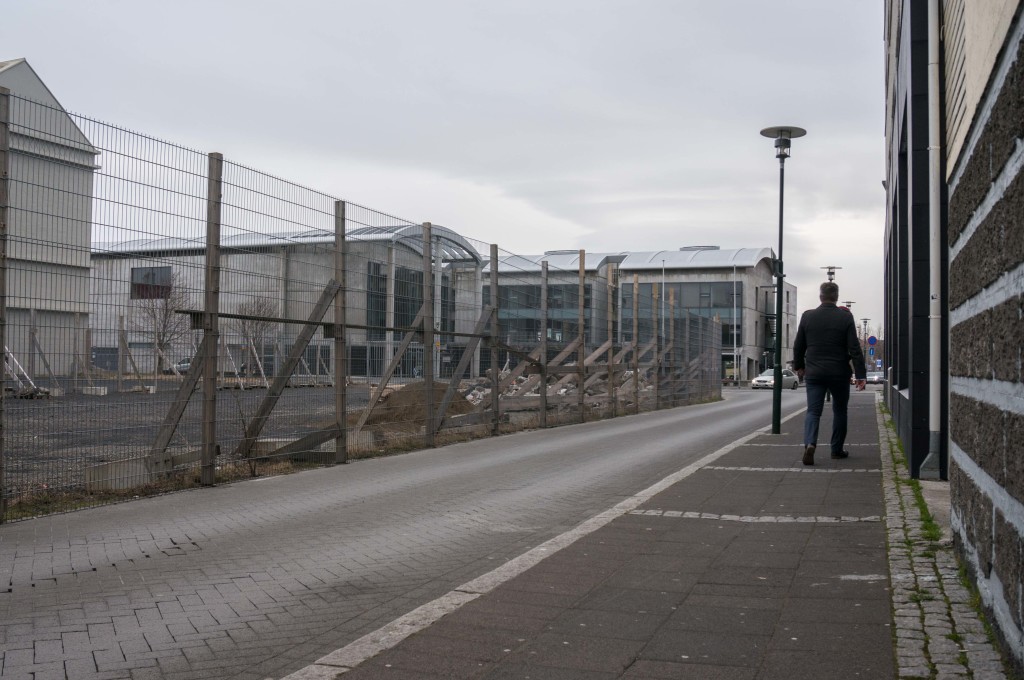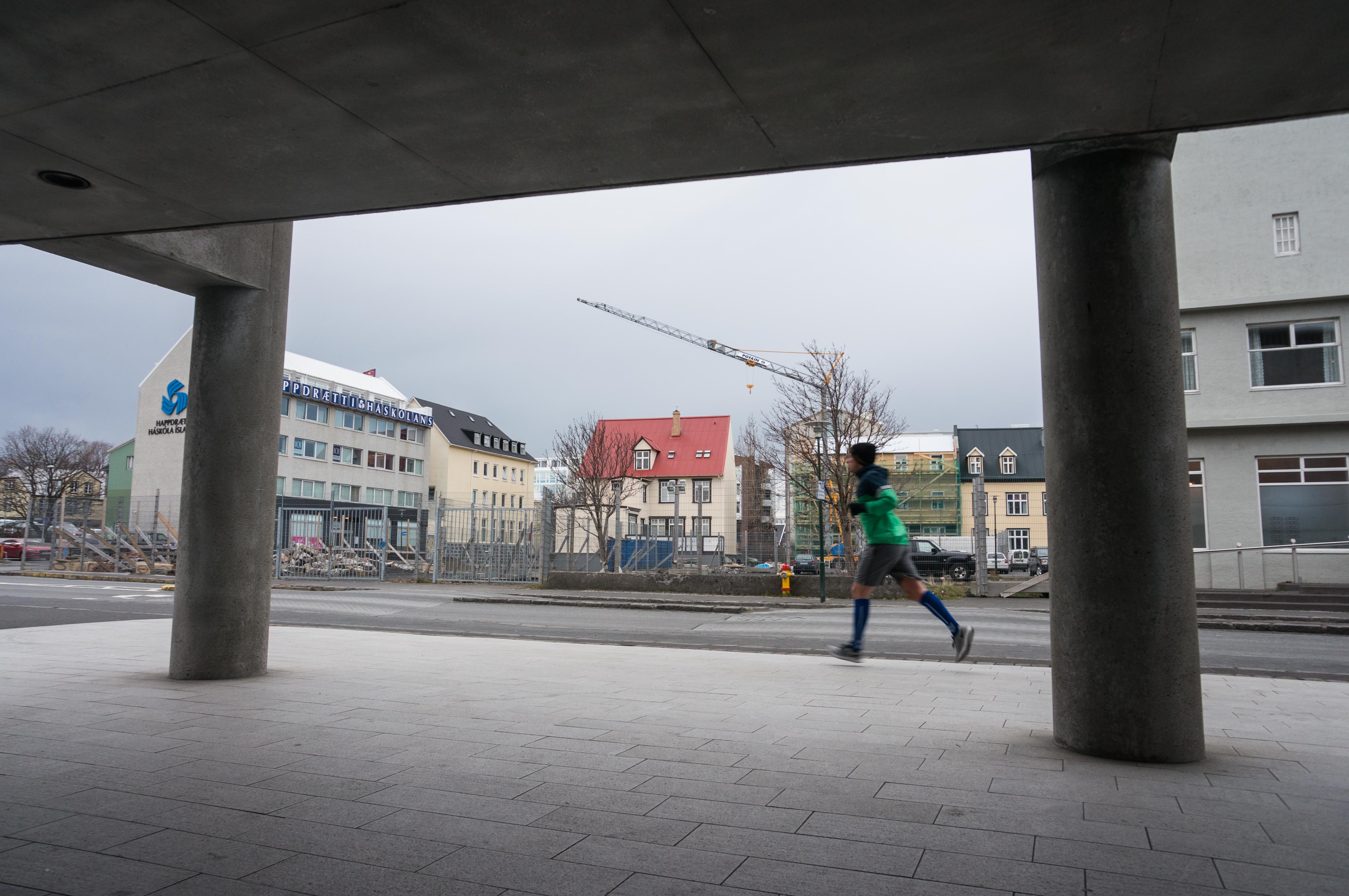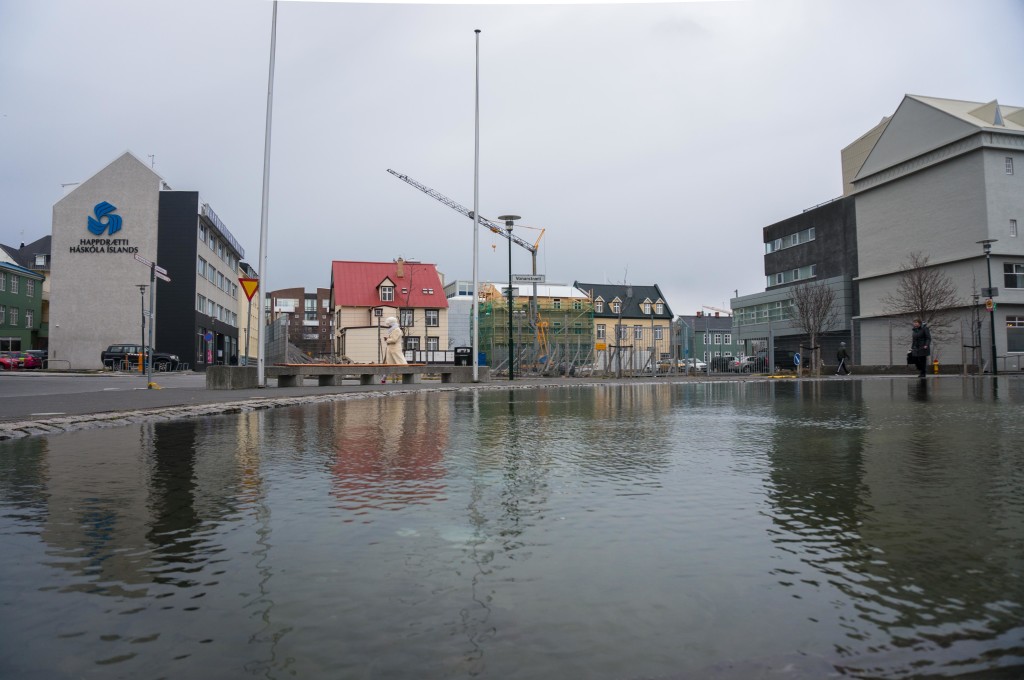Downtown Reykjavik is undergoing considerable development these days, and the planned construction in the area has given rise to some lively architectural debate, a debate due in no small part to the ideas put forth by Iceland’s Prime Minister, Mr. Sigmundur Davíð Gunnlaugsson, or rather his involvement in Reykjavik city planning affairs. In one of his more unorthodox ploys, Gunnlaugsson has reintroduced a century-old set of blueprints for an expansion to Iceland’s Parliament Building. The idea was first presented on April 1 of 2015, and most suspected it to be an April Fools’ Day gag of some sort, as the Prime Minister has no authority in such affairs. However, Gunnlaugsson has pursued the matter in full earnestness, as evidenced by the Christmas cards his office sent out this last holiday season, which featured imagery of the “new” building in its proposed location, across the street from Reykjavik City Hall. Read on for Birkir Ingibjartsson’s thoughts on the Prime Minister’s nostalgic tendencies, and whether or not the proposed undertaking can be achieved in today’s world.
Text by Birkir Ingibjartsson, Photos by Arnar Fells Gunnarsson
The ideas put forward by our esteemed Prime Minister on the development of Iceland´s Parliament building and its neighbouring area, colloquially known as Kvosin, have been the subject of much discussion of late. Mr. Gunnlaugsson’s fervor for the topic is notable, but I believe his ideas are based on a considerably myopic ideology. And yet, his actions have, at the very least, sparked a lively debate on the status of architecture and city planning in contemporary Iceland. This debate can only bode well for the future of Kvosin and the city of Reykjavik as a whole.
A location’s historical significance cannot be conjured out of thin air, but is rather something that cultivates through the passage of time and the occurrence of events. The earliest traces of Iceland’s habitation are buried beneath Kvosin’s foundations and it is here that Reykjavik became a city. It is an invaluable part of Iceland’s history, and constitutes the leading cause for the city center’s undeniable appeal. The proposed development of the area only serve to underscore this.
The city center’s historical significance is rooted in how each passing generation has left its mark on the area and used it according to the needs of their own time; they have redefined its purpose and altered it, house by house. This historical record is of far more value than any faux-period impostor building could ever be. Thereby, building “old” student dormitories for the Parliament will contribute nothing to the city center’s historical significance.
The Parliament Grounds
Culture is not simply anything old and recognized; it is a constant stream of creativity. Pulling out architect Guðjón Samúelsson’s dusty old blueprints is thereby not only a blatant dismissal of contemporary talent, but also one of our entire 20th century architectural heritage. To put it differently, such an action is tantamount to a mockery of all our current knowledge and wilfully ignores all what has been achieved since Samúelsson’s school days. Samúelsson’s century-old plans preclude any contemporary examination of the 20th century’s other masters and their many fine works. What kind of building might Icelandic greats such as Högna Sigurðardóttir, Sigvaldi Thordarson or Mannfreð Vilhjálmsson have designed for the Parliament of their day?
To ordain the appearance of a specific structure by way of political decree is thereby not merely an unwise and worrying act of governance, but a mockery of Iceland’s architectural heritage. It belittles Icelandic architects by questioning their ability to interpret the contemporary zeitgeist and seek inspiration from buildings past; buildings that can truly claim to be of Icelandic origin. In truth, one could say that Samúelsson and all his actually built works would be excluded as a source of inspiration by this way of thinking. According to Gunnlaugsson’s ideas, Samúelsson’s architectural gems like the University of Iceland and the National Theater do not exist.
Two excellent examples of good urban structures that will be in close proximity to the new building are the Oddfellows house and Reykjavík’s City Hall. Respectively, the Oddfellow building was built in 1931 to the specifications of master builder Þorleifur Eyjólfsson, and City Hall, the very first building designed by Studio Granda, opened to the public in 1994. The two are radically different in appearance, but both offer important clues to what a decent building on the parliamentary grounds might look like.

The Oddfellows house is of the early modernist, or “funkis,” variety, and owned by a fairly isolationist fraternal order. Its appearance is understated, characterized by clean horizontal lines, not dissimilar to the architectural affectations making their presence felt in mainland Europe at the time. It is unquestionably an urban structure, standing flush with the street and expecting a neighbour to continue the street elevation. It is unassuming, yet dignified. A fragment of the city Reykjavik has long aspired to become.
City Hall, on the other hand, is a highly post-modernist public building, a standalone structure on the corner of Tjörnin, the shallow lake at the heart of Reykjavik. City Hall is visible from a great distance and has a tangible presence in the city. Yet it maintains a light, inviting atmosphere and the street life flows through the building, identifying it as the house of the people. Finally, the city council chamber visibly opens up towards the street, reminding the council members that they represent the people walking by. It is post-modernism at its self-aware best.
A new structure on the Parliament grounds could effectively combine the best aspects of both these proud representatives of their time. A shapely urban structure that fills the vacant space. A first-rate public building designed according to modern ideas on sustainability, transparency and democracy. A house that enriches the surrounding street life with an open and dynamic ground floor that would counter-balance the more serious role of the Parliament’s role in society. Personally, I would also add a spiral staircase, a pink wall and a barbershop, but those are of course merely personal affectations that you can freely ignore, if you so choose.

The Importance of Setting a Good Example
If proper care is taken, a fine and interesting building could come into being on the Parliament grounds, one that makes its presence felt in the surrounding city. This can only take place, however, if the proper procedures are followed to the letter, from the Parliament floor to the construction itself, and in order for procedure to be followed, it must be respected as they are a vital component in a functioning democratic society, one that relies on the conventions we have constructed for ourselves. Politicians make laws. Architects design buildings. Barbers cut hair.
Parliament is the foremost contractor in Iceland. If the Prime Minister truly wishes to encourage a more serious approach to the development of the Parliament’s grounds, in Kvosin or in the building industry as a whole, the Parliament must set a clear example and conduct its own business properly. Inherent in such an example would be to respect its own limitations and for the specialized knowledge that others possess.
The Parliament grounds are the perfect opportunity for any Parliament members with an interest in architecture and city planning to be an good example to other contractors. By investing fully in every stage of the project, the new Parliamentary office building could be a positive influence to others. This will be inconceivable if the structure’s appearance is decided long before anyone can even say with certainty what the project is really about.
Whomever is finally awarded the project will no doubt be possessed of a great familiarity with the area, and how difficult it will be to placate the various conflicting opinions that have surfaced on the subject, and will no doubt continue to be heard. To sideline this debate by deciding the structure’s appearance by Parliamentary decree is an act of ideological shortsightedness and displays a marked contempt for the ability of contemporary Icelanders to solve the problem.
The current generation of Icelandic architects is perfectly capable of seeking its own inspiration for how best to shape Reykjavik. A multitude of examples of this abound, from all decades and styles of the last 100 years, can be seen all over the city. To entrust the development of the Parliament grounds to contemporary minds is an empowerment of culture in and of itself, and the best way to show respect to previous generations. Let us build a grand modern urban building and define our own use of the ground; let us leave a building that can inspire the next generation of Reykjavik’s houses.
Birkir Ingibjartsson architect.

